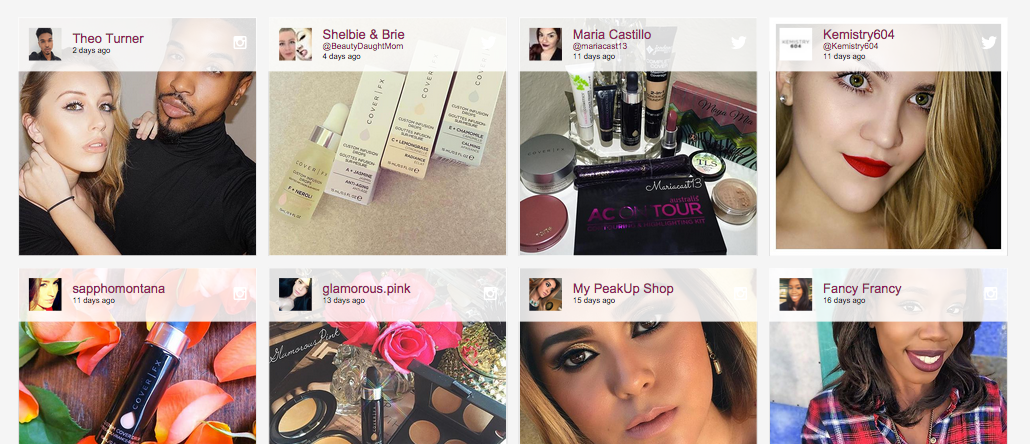
Makeup company CoverFX sells 40-odd shades of powders, foundations and concealers — more than its competitors. But selling its wide selection is tough to do online, where consumers can’t try out the product on.
Until selfies came along.
CoverFX already had tens of thousands of pictures of its customers — selfies taken while the customer was wearing one of its products. “We are a brand that relies a lot on social and earned media,” said Christine Robles, director of e-commerce and digital marketing at CoverFX. “But a lot of these conversations are happening on social. We needed them to also eventually get to our website.”
CoverFX worked with Bazaarvoice, a user-generated content company, to figure out that its customers don’t identify with a model wearing the shade. They want to see real people wearing it.
So the brand used existing selfies and also encouraged customers via email, on social media and with banner ads to share more selfies using #showusyourshade.
Bazaarvoice pulled together selfies from 14 different social networks and “tagged” each photo with the shade that was worn in the pictures. Then, those photos were uploaded onto CoverFX.com. When a shade is clicked, it shows you people wearing that shade. “Our biggest channels are Instagram and YouTube, and we get a lot of images in those,” Robles said.
Since the company started using selfies instead of models three months ago, it has seen the number of people buying its products triple. The number of visits by people who see the selfies on email or social and then go to the site has also tripled. For people who go straight onto CoverFX.com and click on shades, conversions doubled.
CoverFX is one of a handful of makeup and fashion companies mining selfies for consumer data. Zappos, for example, has run an Instagram campaign where it mines user selfies of their outfits and then gets Zappos stylists to recommend products to people based on their style. ModCloth has also used photos of people wearing its clothes on its site to let people see how others style their products. Other brands have gone even further: CoverGirl now tests its makeup to see how it performs in a selfie. It’s a smart tactic simply because of the scale of data available: About a million selfies are taken every day, according to a study by photo design agency NowSourcing. And as of Oct. 9, there were 210 million photos tagged #selfie on Instagram alone.
Rony Zeidan, founder at RO NY, a luxury agency, said that selfies definitely “work for the cosmetics industry.” He likened it to how beauty brands drove traffic to their products via vloggers like Michelle Phan who show you what the products actually looked like. “You can see the final look and payoff,” he said.
More in Marketing

Best Buy, Lowe’s chief marketing officers explain why they launched new influencer programs
CMOs launched these new programs in response to the growing importance of influencers in recommending products.

Agencies create specialist units to help marketers’ solve for AI search gatekeepers
Wpromote, Kepler and Jellyfish practices aim to illuminate impact of black box LLMs’ understanding of brands search and social efforts.

What AI startup Cluely gets — and ad tech forgets — about attention
Cluely launched a narrative before it launched a tool. And somehow, it’s working.





